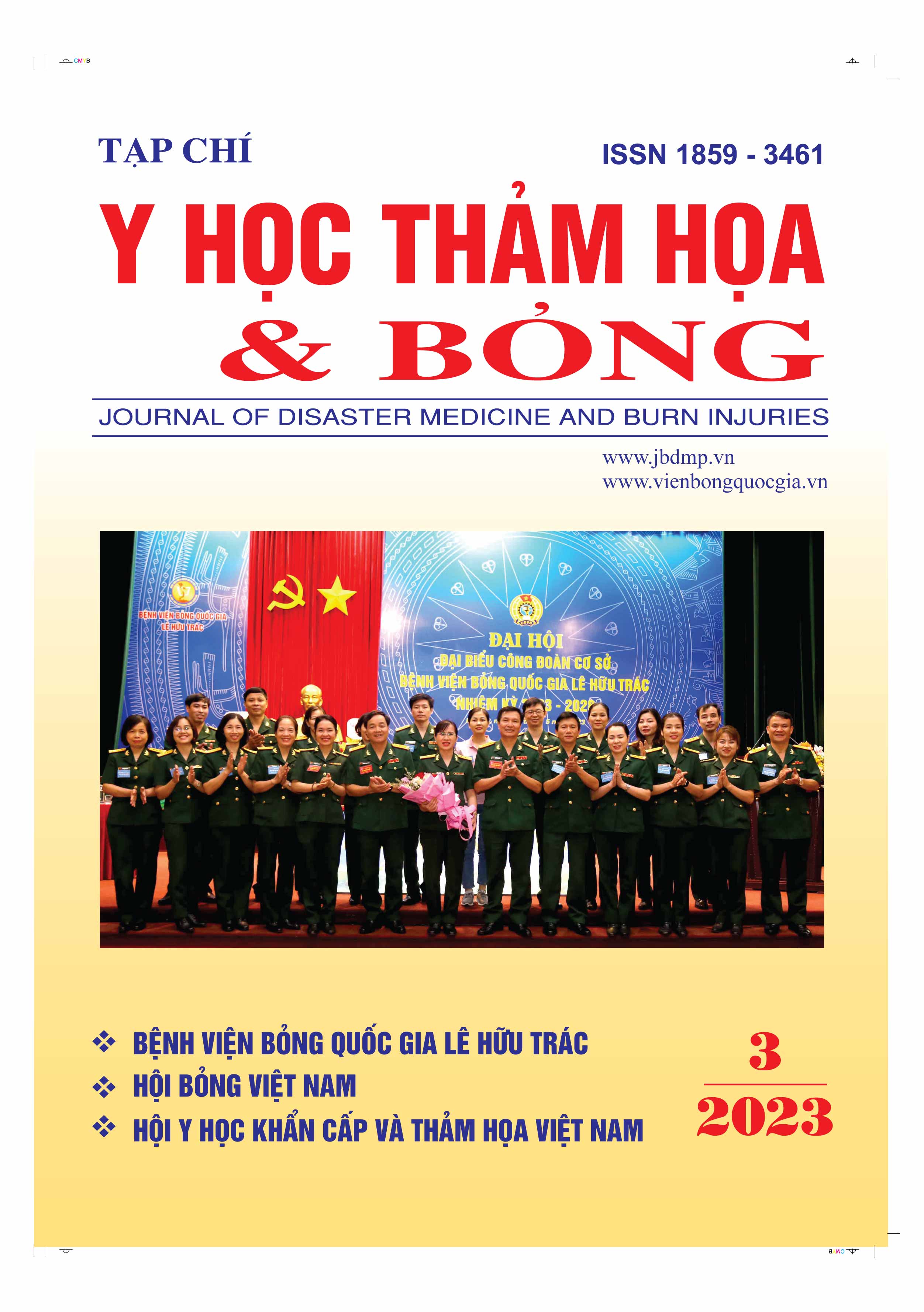Chăm sóc vết thương nhiễm khuẩn
Nội dung chính của bài viết
Tóm tắt
Nhiễm khuẩn vết thương/vết thương nhiễm khuẩn (VTNK) khá phổ biến trong môi trường chăm sóc y tế toàn cầu. Vết thương nhiễm khuẩn dẫn đến kéo dài thời gian nằm viện, tăng chi phí điều trị và gánh nặng y tế, tăng nhiễm khuẩn bệnh viện và sự kháng kháng thuốc ảnh hưởng chất lượng điều trị, tăng nguy cơ biến chứng do vậy việc quản lý VTNK khá quan trọng và cần có sự phối hợp các chuyên khoa để giải quyết.
Đánh giá toàn diện người bệnh từ khi vào viện trong suốt quá trình chăm sóc, phối hợp kiểm soát các nguy cơ gây nhiễm khuẩn vết thương và ảnh hưởng sự liền thương, đánh giá và theo dõi quá trình tiến triển vết thương qua đó đưa ra các biện pháp chăm sóc phù hợp đóng vai trò quan trọng.
Ngoài các biện pháp can thiệp tại chỗ trực tiếp: cắt lọc, thay băng bằng các sản phẩm chăm sóc vết thương đặc hiệu, áp dụng các biện pháp tích cực như hút liên tục áp lực âm (VAC), qui trình TIME mang lại hiệu quả chuyên môn cũng như chi phí.
Chi tiết bài viết
Từ khóa
Vết thương, chăm sóc vết thương, vết thương nhiễm khuẩn, qui trình TIME
Tài liệu tham khảo
2. Nguyễn Đức Chính, Trần Tuấn Anh, Phạm Vũ Hùng, Nguyễn Minh Ky và cộng sự. Chuẩn bị nền vết thương - Vai trò quan trọng trong chăm sóc vết thương nhiễm khuẩn. Đề tài nghiên cứu cấp cơ sở, 2021.
3. Björnsdóttir S, Gottfredsson M, Thórisdóttir AS, et al. Risk factors for acute cellulitis of the lower limb: A prospective case-control study. Clin Infect Dis. 2005;41:1416-22.
4. Eron LJ, Lipsky BA, Low DE, Nathwani D, Tice AD, Volturo GA. Expert panel on managing skin and soft tissue infections. Managing skin and soft tissue infections: Expert panel recommendations on key decision points. J Antimicrob Chemother. 2003;52:i3-17.
5. Stevens DL, Bisno AL, Chambers HF, et al. Infectious Diseases Society of America. Practice guidelines for the diagnosis and management of skin and soft-tissue infections. Clin Infect Dis. 2005;41:1373-406. (Errata in 2005;41:1830, 2006;42:1219).
6. Elston DM. Optimal antibacterial treatment of uncomplicated skin and skin structure infections: Applying a novel treatment algorithm. J Drugs Dermatol. 2005;4(6 Suppl):s15-9.
7. Björnsdóttir S, Gottfredsson M, Thórisdóttir AS, et al. Risk factors for acute cellulitis of the lower limb: A prospective case-control study. Clin Infect Dis. 2005;41:1416-22.
8. Frazee BW, Lynn J, Charlebois ED, Lambert L, Lowery D, Perdreau-Remington F. High prevalence of methicillin-resistant Staphylococcus aureus in emergency department skin and soft tissue infections. Ann Emerg Med. 2005;45:311-320.
9. Eady EA, Cove JH. Staphylococcal resistance revisited: Community-acquired methicillin-resistant Staphylococcus aureus - an emerging problem for the management of skin and soft tissue infections. Curr Opin Infect Dis. 2003; 16:103-24.
10. Fung HB, Chang JY, Kuczynski S. A practical guide to the treatment of complicated skin and soft tissue infections. Drugs. 2003;63:1459-80.
11. Falagas ME, Matthaiou DK, Vardakas KZ. Fluoroquinolones vs beta-lactams for empirical treatment of immunocompetent patients with skin and soft tissue infections: A meta-analysis of randomized controlled trials. Mayo Clin Proc. 2006; 81:1553-66.


